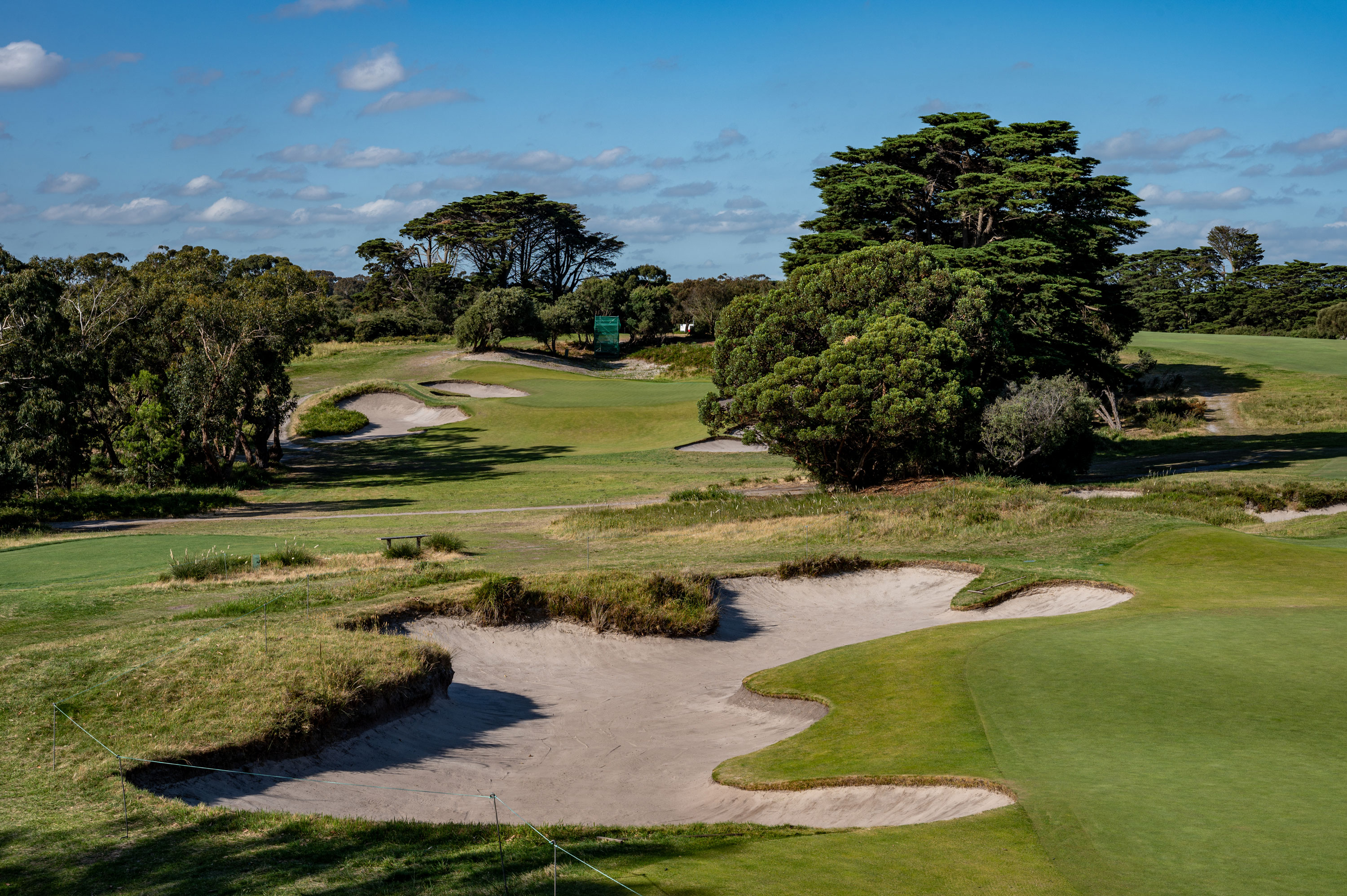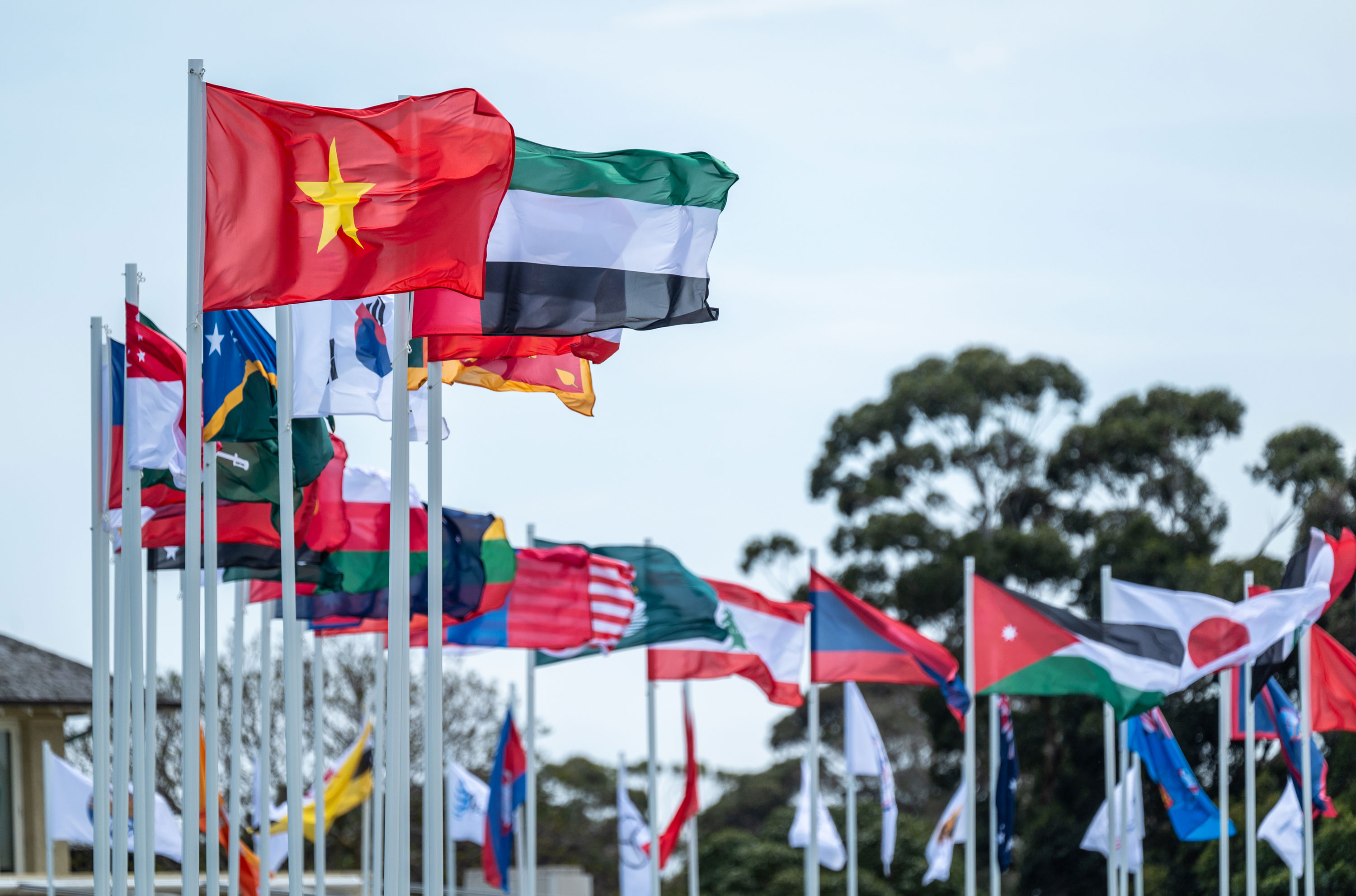How The Asia Pacific Amateur Championship Changed The Face Of Golf
The AAC has produced Major champions, helped boost participation and inspired further international amateur competitions in developing regions.


When The R&A and The Masters Tournament got together with the Asia Pacific Golf Federation to start a tournament in 2009, the objective was to grow the game of golf in the Asia Pacific region. 14 years on, it’s safe to say that objective has been realised beyond even the most optimistic expectations.
The Asia Pacific Amateur Championship (AAC), which takes place this week at Royal Melbourne Golf Club in Australia, has produced Major winners, it has inspired countless youngsters to take up, and go on to excel, in our sport, it has spawned further international amateur tournaments (both men’s and women’s) that have grown the game in other parts of the world. The AAC has changed the face of golf.

The 14th instalment of the AAC takes place at Royal Melbourne
The winner of the AAC earns a place in both The Open Championship and The Masters Tournament plus an exemption for The Amateur Championship, the runner up (or runners up) gain a place in The Open Qualifying Series. The top prizes are significant and can be life-changing for the individuals who secure them, and the wider impact of the tournament has been huge for golf more generally. Not only has the standard of amateur golf improved right across the Asia Pacific region but also, at a grass roots level, there has been increased investment as countries look to develop the sport and create new champions.
In The R&A’s most recent global participation report, published in August of this year, data shows the number of golfers playing on nine and 18-hole courses in Asia has increased by 2.5 million from 2012 to 2022 (it’s now over 16 million people). In Oceania, the number of registered golfers has gone from 1.65 million to 2.8 million over the same period. The AAC has undoubtedly played a part in inspiring people in this region to take up the game.

Hideki Matsuyama won in 2010 and 2011
The first AAC took place in 2009 at Mission Hills Golf Club in China and was won by 17-year-old South Korean Changwon Han. The following year, I was fortunate enough to be invited to the AAC for the first time when it was held at Kasumigaseki Golf Club outside Tokyo (the 2020 Olympic golf venue.) I was amazed by the level of organisation at that time – although The R&A and The Masters combining to run a tournament is a fairly impressive team! But, even at that early stage, the support for the tournament and the infrastructure in place was impressive. Large crowds watched home favourite Hideki Matsuyama take the title with something to spare. He was a shy 18-year-old at the time but it was clear that he had a rather special talent which was fulfilled in 2021 when he became the first player from Japan to win a men's Major title.

2022 Open champion Cam Smith
Matsuyama’s victory in the 2021 Masters provided definitive proof of the impact the AAC has had on the world game. The Japanese star won the AAC in consecutive years, 2010 and 2011, and has gone on to enjoy a stellar professional career. 2022 Open Champion Cameron Smith is also an alumni of the AAC so that means both The R&A and The Masters Tournament’s premier men’s events have been won by players who competed in the AAC – that fact alone justifies the investment the governing bodies have put in.
International Amateur Events

The Latin America Amateur Championship followed the AAC
The AAC was the first in a series of international tournaments that The R&A has either set up or jointly set up to grow the game in various regions across the globe. The Latin America Amateur Championship (LAAC) was started in 2015 and has produced alumni including Joaquin Niemann, Sebastian Munoz and Mito Pereira. In 2018, the Women’s Asia Pacific Amateur Championship was founded and, since 2021, The R&A together with the Annika Foundation has run the Women’s Amateur Latin America.
Subscribe to the Golf Monthly newsletter to stay up to date with all the latest tour news, equipment news, reviews, head-to-heads and buyer’s guides from our team of experienced experts.
More recently, completing the circle of men’s amateur international events, The R&A announced at this year’s Open Championship that the inaugural African Amateur Championship will be played next February at Leopard Creek Golf Club in South Africa. The winner of that event will earn a start in the 152nd Open Championship at Royal Troon.
The AAC paved the way for these other global initiatives, increasing the span of elite golf across developing golfing regions, focusing the attention of national associations and the top players to improve and move forwards.
Changing Lives

Players from 36 countries will compete at this year's AAC
For those at the top level of amateur golf, the game can shape and change lives. A great example of that is just how many in the field for the AAC this week at Royal Melbourne are currently attending colleges in the USA. In fact, of the 120 entrants for this 14th instalment of the AAC, no fewer than 37 players are in college in the States. Players from the Asia Pacific region are increasingly being scouted by US colleges and others are choosing to go down that route to gain an education and first rate competitive golfing experience at the same time. The AAC has encouraged this trend.
When Hideki Matsuyama won in 2010, he was ranked 544th on the World Amateur Golf Ranking (WAGR). Since then, the number of Asia Pacific players in the upper echelons of those rankings has increased steadily. When Keita Nakajima won the 2021 AAC in Dubai, he was the world’s number 1 ranked amateur. This week, there are nine players in the field ranked in the top-100 on the WAGR.
This year’s Asia Pacific Amateur will feature 120 players from 36 countries. The more recognised golfing nations like Japan, Australia and South Korea are going to be well represented but there are also entrants from lesser-known golfing countries like Bhutan, Papua New Guinea and Laos. The chance for golfers from these countries to compete on such a stage is not only a tremendous experience for them, but also a huge shot in the arm for their home federations who can build on their participation when it comes to growing golf back home.
The AAC was set up to get more people playing and to encourage elite players from the Asia Pacific Region to reach their full potential in the sport. On both counts it has been a hugely successful venture – There are more people playing in the Asia Pacific region since the tournament's inception and there are more people playing globally, thanks, in part, to the establishment of tournaments created on the back of the AAC’s success - events like the LAAC. Golfers who have competed in the AAC have now won Majors and many others have gone on to enjoy lucrative careers in the professional ranks. The AAC has, without question, changed the face of golf.

Fergus is Golf Monthly's resident expert on the history of the game and has written extensively on that subject. He has also worked with Golf Monthly to produce a podcast series. Called 18 Majors: The Golf History Show it offers new and in-depth perspectives on some of the most important moments in golf's long history. You can find all the details about it here.
He is a golf obsessive and 1-handicapper. Growing up in the North East of Scotland, golf runs through his veins and his passion for the sport was bolstered during his time at St Andrews university studying history. He went on to earn a post graduate diploma from the London School of Journalism. Fergus has worked for Golf Monthly since 2004 and has written two books on the game; "Great Golf Debates" together with Jezz Ellwood of Golf Monthly and the history section of "The Ultimate Golf Book" together with Neil Tappin , also of Golf Monthly.
Fergus once shanked a ball from just over Granny Clark's Wynd on the 18th of the Old Course that struck the St Andrews Golf Club and rebounded into the Valley of Sin, from where he saved par. Who says there's no golfing god?